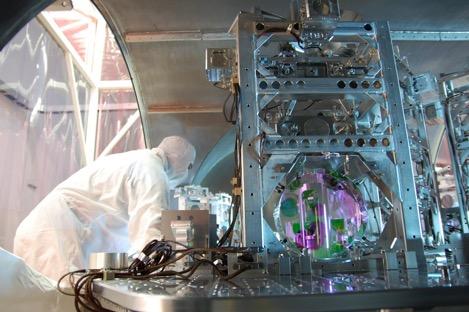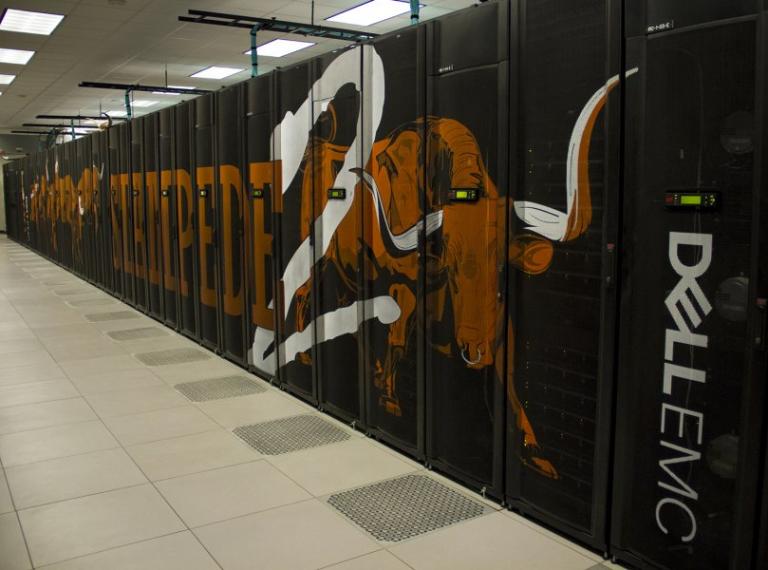Texas Advanced Computing Center (TACC) changed the world by supporting research from black holes to cures for cancer. Now, TACC introduces its most powerful supercomputer to date — Stampede2! What discoveries will it bring?
Supercomputers solve problems and accelerate discovery in a way that traditional experiments cannot.
These massive machines help researchers explore problems that are too vast (like black holes), too small (like DNA) and too dangerous (like hurricanes).
For more than a decade UT Austin’s Texas Advanced Computing Center (TACC) has led the academic world in supercomputing, continually pushing the envelope in power and speed.
In 2013, TACC deployed the first Stampede supercomputer. During its five years of operations, Stampede helped tens of thousands of researchers nationwide complete more than 8 million successful computing jobs and clocked more than 3 billion core hours of computation. Through its five-year life cycle Stampede was continually ranked by the Top500 organization as one of the world's top 10 most powerful computing systems. It remained in the top 20 up to this year, when it was retired from operations.

The 2015 discovery of gravitational waves by LIGO is one of the most important discoveries in modern science. TACC and Stampede were there as part of the team, and this is just one example of the more than 11,000 researchers who used Stampede1 to accelerate discovery.
[[Read about more science research highlights of Stampede1]]
But, supercomputers live fast and retire young. With each new generation of computer processors, they become significantly faster and less expensive to operate than the one before it.
On July 28, 2017, TACC introduced its most powerful supercomputer to date – Stampede2!
It is as powerful as 100,000 desktop computers — one for every seat in Royal-Texas Memorial Stadium.

“Stampede2 represents a new horizon for academic researchers in the U.S.,” said Dan Stanzione, TACC’s executive director. “It will serve as the workhorse for our nation’s scientists and engineers, allowing them to improve our competitiveness and ensure that UT Austin remains a leader in computational research for the national open science community.”
The newest strategic resource for the nation’s researchers, Stampede2 was made possible by a $30 million award from the National Science Foundation (NSF).Experts across all disciplines can now answer new questions that could not be addressed through theory or experimentation alone.
TACC experts built the computer with support from The University of Texas System and industry partners Dell, Intel and Seagate.
Researchers have already started using the system to conduct large-scale scientific studies. Some preliminary findings from early user projects include:
- Tumor identification from magnetic resonance imaging (MRI) data at The University of Texas at Austin.
- Real-time weather forecasting at the University of Oklahoma that has helped direct storm-chaser trucks.
- Earthquake predictions for the Southern California region at the University of California, San Diego that achieved a five-fold performance improvement over previously reported results.
- Teams from Stephen Hawking's cosmology research laboratory at Cambridge University, leveraging Stampede2, achieved unprecedented comparisons of previously performed simulations with gravitational wave data observed by the NSF-funded Laser Interferometer Gravitational-Wave Observatory (LIGO).
UT Austin is collaborating with several other leading universities to enable Stampede2 including Clemson University, Cornell University, Indiana University, The Ohio State University and the University of Colorado at Boulder. Stampede2 is expected to serve the scientific community through 2021, supporting tens of thousands of researchers during this period. An additional NSF award for $24 million was recently granted to cover upcoming operations and maintenance costs for the system.
“For 16 years, the Texas Advanced Computing Center has earned its reputation for innovation and technological leadership,” said Gregory L. Fenves, president of UT Austin. “It is only fitting that TACC has designed and now operates the most powerful supercomputer at any university in the U.S., Stampede2, enabling scientists and engineers to take on the greatest challenges facing society.”
Source: UT News



